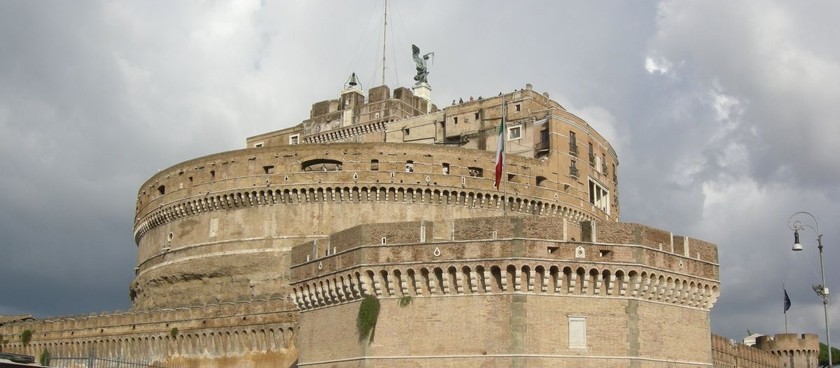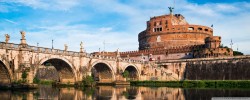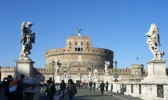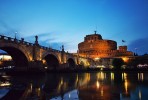- #IT09
- Lungotevere Castello, 50, 00193 Roma RM, Italy
- +390632810
- pm-laz@beniculturali.it
- http://castelsantangelo.beniculturali...
- Working hours*:
Monday - Sunday 9:00 -19:30
Closing days: mondays, first Sunday of each month (reservation not available), 1 January, 1 May, 25 December. - Prices*:
Full price ticket: 20,50 euro per person;
Half price ticket: European citizens from 18 to 25 years old.
Free ticket: children from 4 to 17 years old.
Babies under 4 years old do not need any reservation.
Disabled people enter free. - * - opening and closing times as well as entrance prices, are subject to alterations without notice. Visitors are advised to check before visiting.
- Please note: this building is not suitable for people with walking problems.
- 41.9030870, 12.4662650 Copy to clipboard Copy
-
#Castles , #History
Castel Sant'Angelo was built around 123 a.C to be the monumental tomb of the emperor Adrian and his family. The Castle has undergone many renowations during centuries and its destination changed several times. It was first an imperial mausoleum during the ancient Rome, then became a fortified avampost, a prison and even a Renaissance fashion residence.
Nowadays the castle is characterized by its thik and powerful walls and magnificent frescoed halls. Visitors can also admire the precious art collections of paintings and articrafts.
Temporary art exhibitions are often housed in the castle in some periods of the year. Temporary exhibitions can be admired when planned by visitors and an extra fee is added to the standard price ticket.
Castel Sant'Angelo is now a National Museum. The ancient fortress can be reach on foot walking along the Ponte Sant’Angelo. This complex represents one of the most enchanting corner of the city of Rome. Every day thousand of visitors walk accross this this bridge to admire the marvellous circular structure of the castle.
The building today has a completely different aspect compared to its original project. Actually at first the castle came to life as the Mausoleum of Emperor Hadrian.
The Emperor made it in 135 AD. on the area of the Horti Domiziani as a family tomb. The project was designed by the architect Demetrius and it was completed in 139 AD. when the successor of Hadrian had already come to power: Antonio.
In order to connect the mausoleum with the Campo Marzio, Pons Aelius was also built. Today this bridge is better known as Ponte Sant’Angelo.
Once Castel Sant'Angelo had a base of 89 square meters and reached a height of 15 meters; above it was a cylindrical structure 20 meters high surmounted by a small temple above which was a bronze statue of Hadrian. At the centre of the structure were the sepulchres.
During the 5th century AD the structure was incorporated into the walls that the Emperor Honorius built to defend Rome from vandalism invasions. The walls were then reused in the 6th century in defence of the tomb of St. Peter by the Popes.
A Christian legend also tells that on the top of the former mausoleum, Pope Gregory I (commonly known as Saint Gregory the Great) saw the Archangel Michael brandishing a sword upward. From there it became known as Castel Sant’Angelo. From that moment on, the building took more and more a Christian connotation and over time became the site of a sort of Papal jail where illustrious personages were "locked up" to be kept under strict control. The castle was also connected by a secret passage to St. Peter's in the Vatican. This secret passge was used as secret passage to move from the castle to Saint Peter over centuries by killers, eminent people and Popes.
A VISIT THROUGH HISTORY
Although Castel Sant'Angelo is not one of the most visited or well-known destinations in the Eternal City, booking it is strongly recommended to avoid waiting lines at the ticket office.
The National Museum located inside offers a 360 degrees tour of the structure and gives us a clear idea of how it changed throughout history: from its construction as a mausoleum of Emperor Hadrian up to its use as an "illustrious prison" of the State of the Church.
The admission ticket includes the general visit of the museum and the access to temporary exhibitions usually set up inside at different times of the year.



